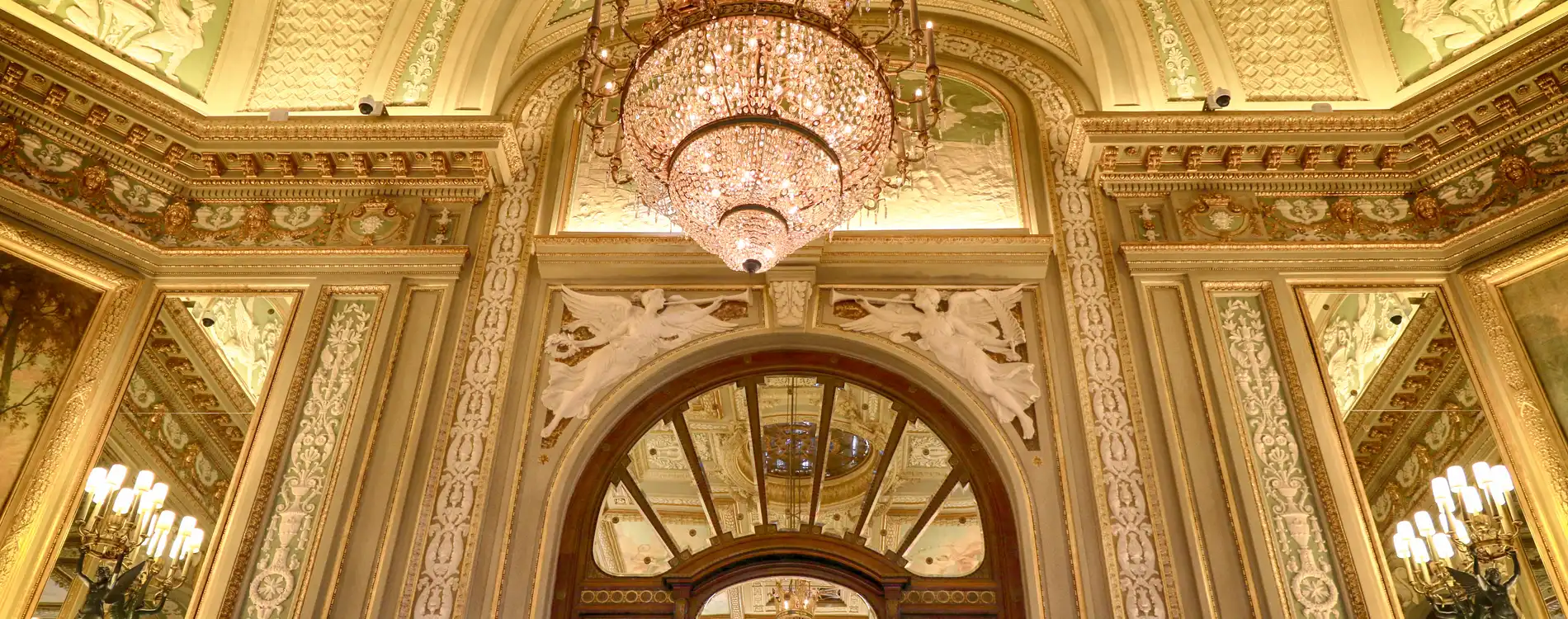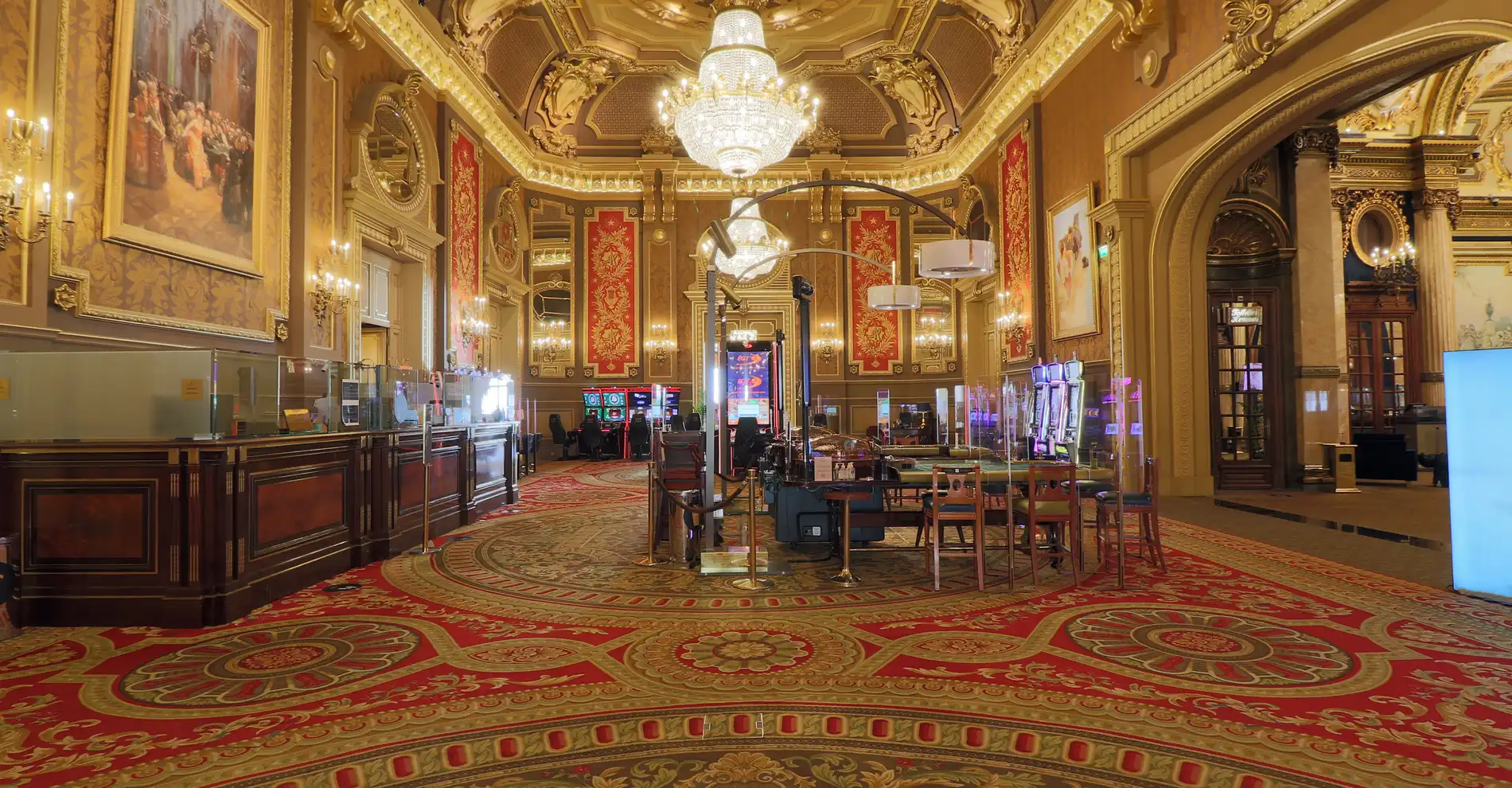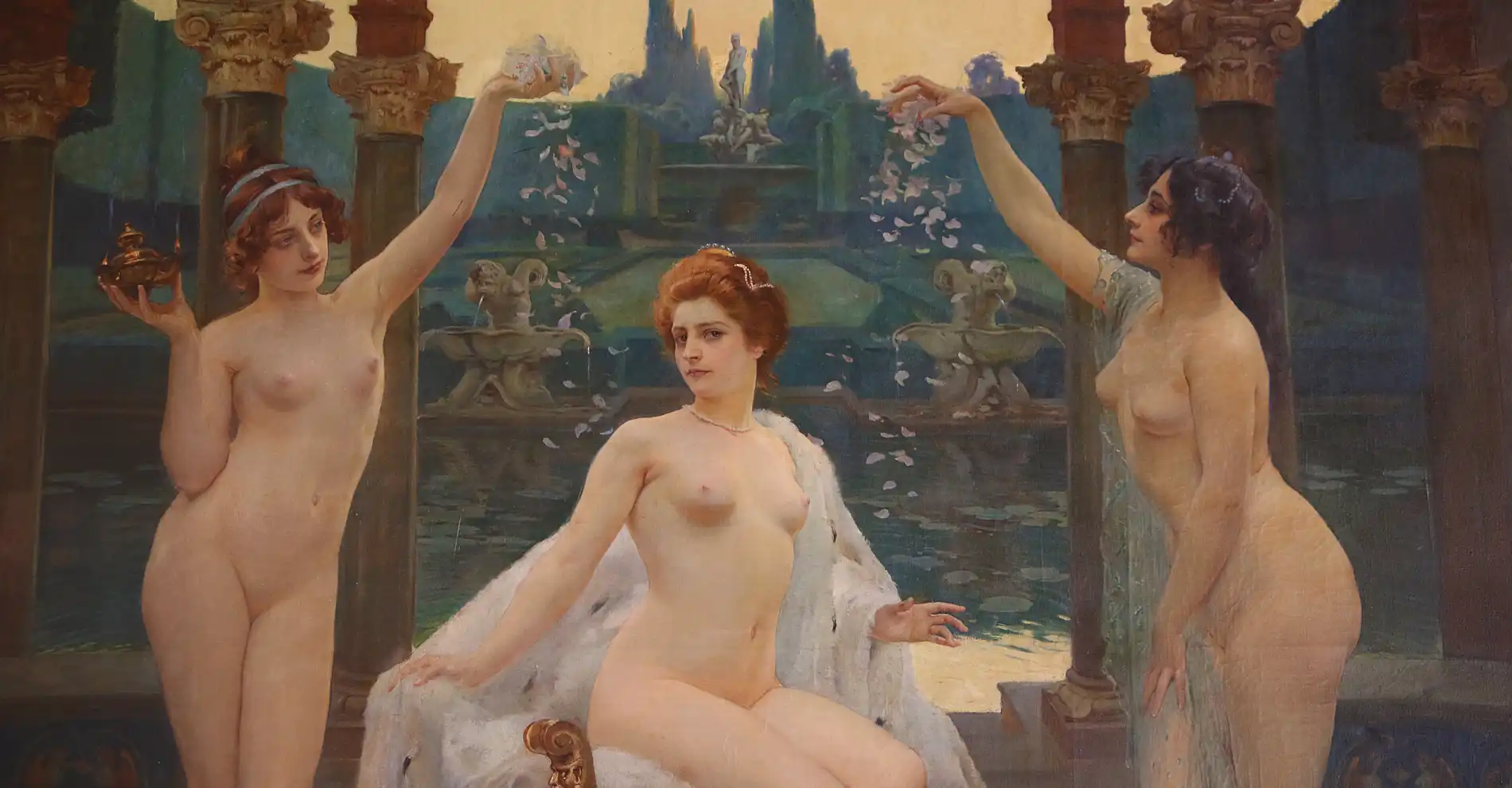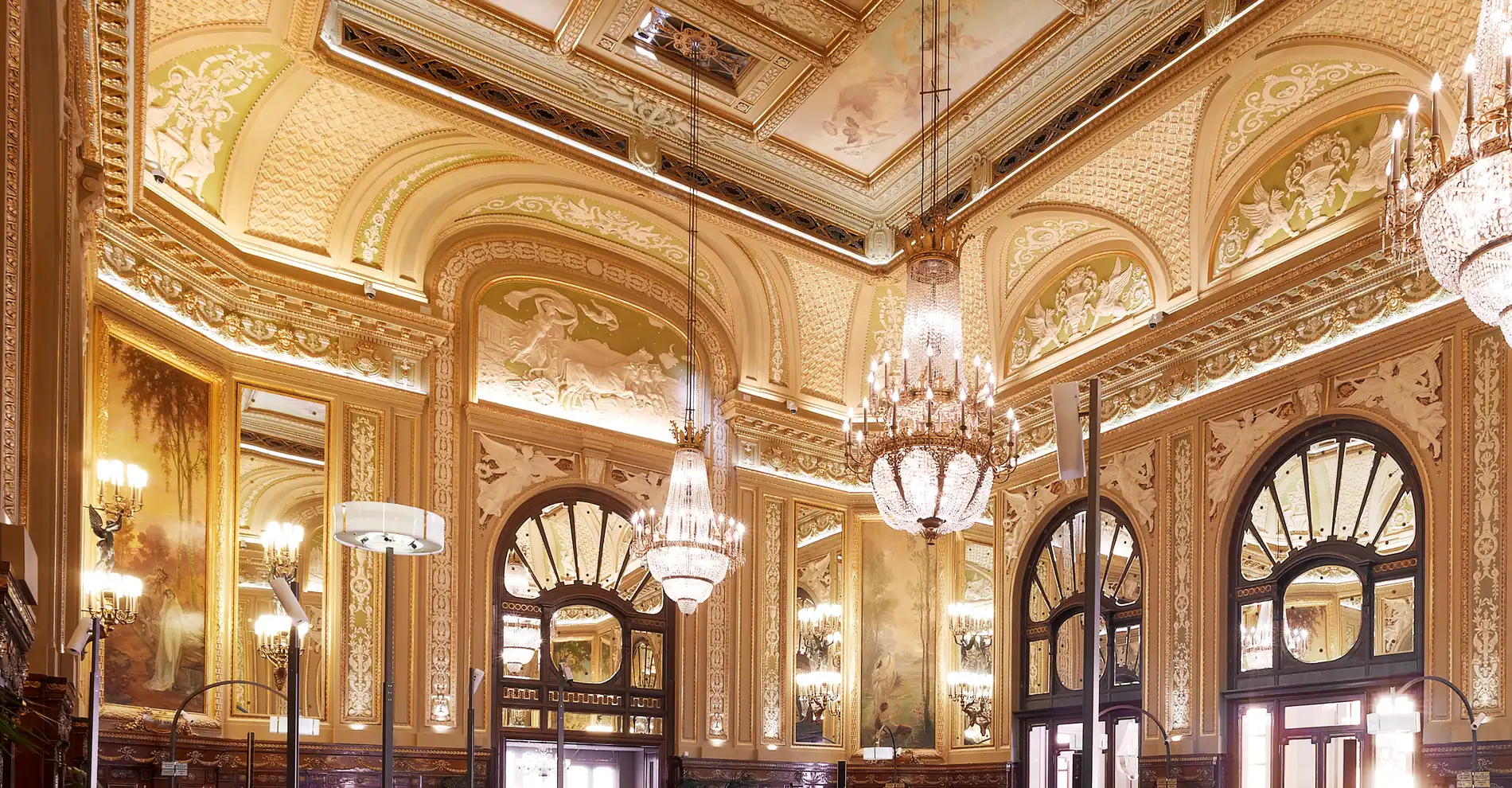Published on May 26, 2023Updated on October 17, 2023
Conceived by artists and architects, the Casino de Monte-Carlo is a legendary place known for its timeless elegance, iconic history, ornate beauty, and mysterious aura. Behind the Belle Époque façade of the gambling temple, built in 1879 by Charles Garnier, unfold works on the walls and ceiling, paintings, stained glass, and bas-reliefs that contribute to the charm of the place. Discover the secrets and anecdotes of the Casino de Monte-Carlo that are part of its fascinating history.
For those interested in the architectural and mural Heritage of the French Riviera, the Casino in Monte-Carlo is a must-see because it showcases the work of countless artists from between 1863 and 1910. Representing the themes of women and nature, the painted works and decorative ornaments in each space create a cosy and unique atmosphere. Crowned with a large glass roof and eight Bohemian crystal chandeliers, the Salle Europe is the place to roll dice in exciting games of craps.
Photo: On the walls of the Salle Europe, the works of French artists Paul Steck, Pedro Ribera, Georges Picard and Félix-Hippolyte Lucas.
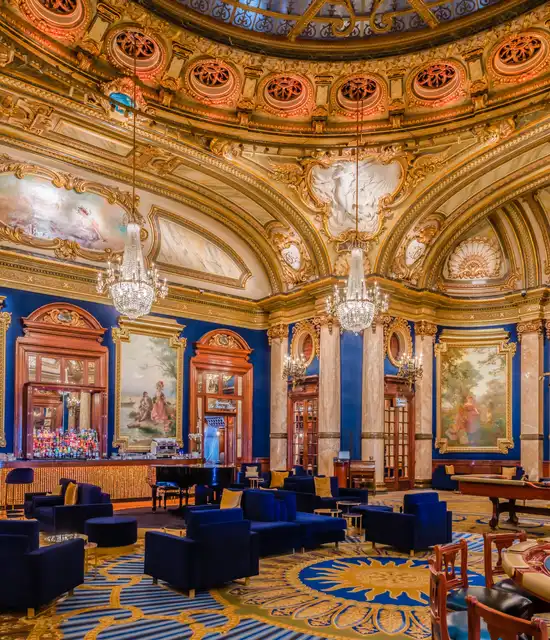
The entrance is flanked by two works from 1898 by Paul Steck, a pupil of Jean-Léon Gérôme and a drawing education inspector. Those works are La Récolte d’oranges and La Promenade en mer, which depict local scenes of the orange harvest and seascape, respectively. While Georges Picard indulges in some seasonal celebrations in L’Automne and Le Printemps, Félix-Hippolyte Lucas makes his mark in the form of allegories of painting and music. And it is also said that looking through the now-sealed oeils-de-bœuf, Camille Blanc, president of the Société des Bains de Mer at the time, would keep a watchful eye on the casino’s employees and players.
Photo: The bull’s eye window from which one could observe the Europe room.

From here there is a passage to the chic Salon Rose bistro, which was used as a smoking room when it was built in 1903, with its large brown-hued ceiling designed to hide the wisps of smoke. Welcomed at the entrance by depictions of women dressed in 18th century fashions. We know how much Empress Eugénie, wife of Napoleon III, loved this period! Players can bear witness to an amusing scene played out on the ceiling: the buttocks of the cherub, which always seem to be presented from the front like the gaze of the Mona Lisa, follows the viewer wherever they go.
Photo: On the ceiling of the restaurant Le Salon Rose, the former smoking room of the casino, Les Fumeuses painted by Massimiliano Gallelli.
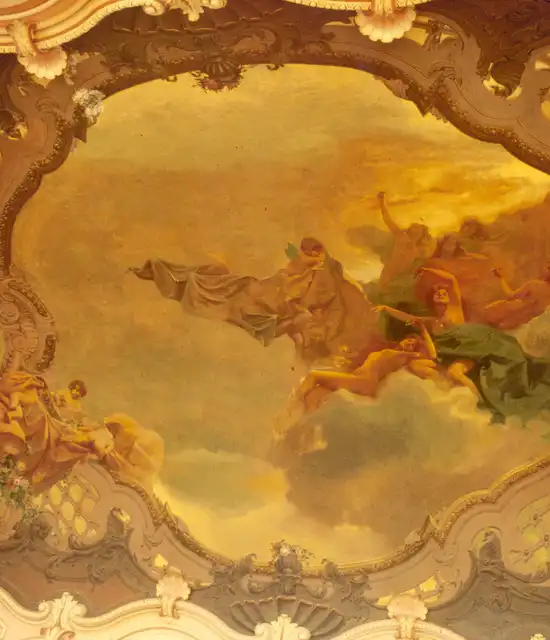
An enormous canvas, perfect for dancing
Designed in 1881 by the architect Charles Garnier, the Salle des Amériques mixes the contemporary glare of slot machines with works painted in the style of Sir Lawrence Alma Tadema and Christian Ludwig Bokelman and astonishing sculpted masks symbolising the four seasons.
Photo: The Salle des Amériques made in 1881 by the architect Charles Garnier.
Built in 1903 to serve as a reading room for people accompanying the players, the Salle Blanche is now set aside for VIP guests and features a work by Paul Gervais, Les Grâces Florentines. It’s interesting to note that this renowned painter gave the three ancient goddesses the faces of Monte-Carlo socialites from the Belle Epoque: Liane de Pougy, Émilienne d’Alençon and La Belle Otéro. As they were painted naked, the work obviously created a minor scandal.
Used today for major events, the twin rooms known as Salles Jumelles, designed by the architect Jules Touzet in 1890, were once hubs of conversation. Celebrating nature in their lower part, they are home to portraits in stained glass that represent the emotions, and are crowned with inscribed windows by the Parisian house Prestat et Cie.
Photo: In one of the two Touzet salons, celebration of nature with the painting Jeunes Femmes jouant avec des cygnes by Léon Hodebert.
The visit ends in the famous Salle designed in 1910 by the architect Julien Médecin, which is set aside for the greatest players and tournaments. The space is enhanced with paintings by Armand Segaud which honour morning, noon, evening and night, and by Emile Peynot’s bas-reliefs of the sun god Helios and his sister Selene, the moon goddess.
Photo: In the Salle Médecin, Midi by Armand Segaud.
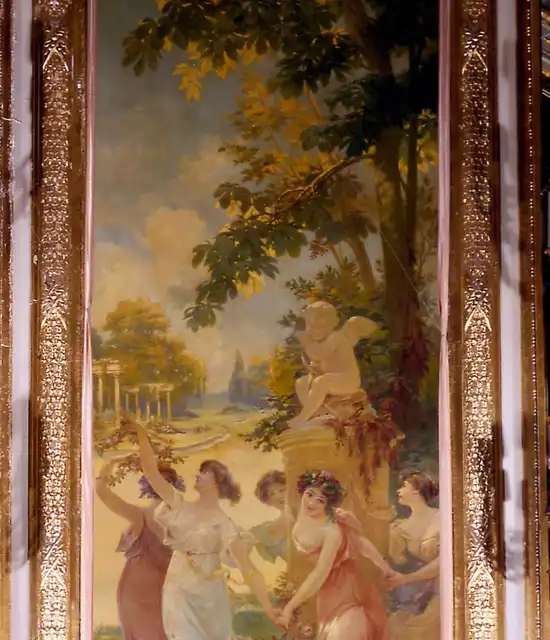
Avant-Garde and Technological Innovation at the Casino Café de Paris
The Casino Café de Paris has nothing to envy the most coveted establishments in Las Vegas. Combining cutting-edge technology and modern aesthetics, its slot machine park is constantly evolving, guaranteeing a gaming experience rich in emotion.

Why does the Rose Ball continue leave us spellbound?
Monaco's leading charity event has lost none of its glamour. With its roster of stars, major artists and unique live entertainment, the Rose Ball continues to dazzle guests almost 70 years on!
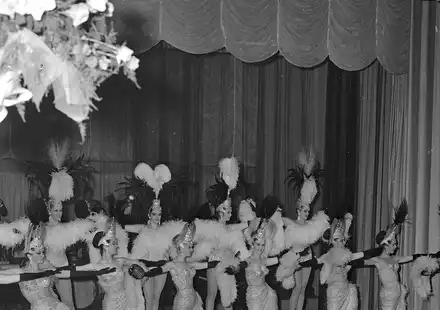
Rolex Monte-Carlo Masters, the holy ground
Learn the history of one of the most prestigious tennis tournaments of the ATP tour, the Rolex Monte-Carlo Masters. It takes place every spring on the clay courts of Monaco.

